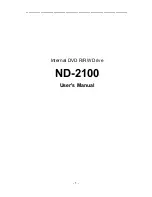
Summary
Preface
P. 6
Chapter 2
P. 17
Technical data
Chapter 5
P. 76
Reception, storage
and installation
Chapter 4
P. 54
General information
Chapter 3
P. 47
Application notes
Chapter 6
P. 115
Options
Chapter 7
P. 129
Preventive maintenance
Chapter 1
P. 15
Overview
and installation diagram
Answer Drives 1000
51
3
3.6 MOTOR SELECTION
When selecting a motor, check:
•
Natural Resonance.
The vibration can be minimized by using a flexible
coupling or by placing a rubber shock absorber under the motor base.
With the drive it is possible avoid critical frequencies.
•
The AD1000
provides a control of the variable frequency. The motors
and the loads must be able to operate over the speed and power range
supplied by the drive.
•
Noise
The noise of the motor operated by an drive is higher than
a motor operated by the power supply network (Drive switching
frequency = 1.5kHz). The use of the output reactor or of the sinusoidal
filter reduces or deletes the noise increase.
•
Protect the windings and the motor bearings.
The output voltage of
modern IGBT drives, in relation to the output frequency, are featured
by pulses with a value of approximately 1.35 the power supply network
voltage with a very short rising edge. The voltage of the pulses can be,
depending on the characteristics of cables, of a double value at the
motor terminals; this can cause additional stress to the motor insulation.
The modern PWM drive with their high rising edge pulses and high
switching frequencies can cause shaft currents through the bearings of
the motors which can gradually erode the balls of the bearing.
Motor insulation stress can be avoided with the use of dv/dt filters. The
dv/dt filters also reduce shaft currents on the bearings.
To avoid damage to motor bearings it is necessary to provide insulated
bearings (NDE, non-driving end) and output filters according to the table
of the next page. It is also necessary to choose the cables and install
them according to the instructions of this manual.
•
Ventilation.
The ventilation of the motor is appropriate for the
envisaged operating speed range.
Prolonged operation at low speed requires an auxiliary cooling of the
motor (see diagram section 1 - 2 ).
•
Overload.
The motor is able to provide adequate overload torque in the
operating speed range (see section diagram 3 - 4 ).
• For a higher speed than standard, contact the manufacturer of the motor
to check its operation.
• In overspeed operation, vibrations can occur due to the rotor imbalance
or vibrations of the load. The noise of the motor powered by drive may
increase.
3.6 MOTOR SELECTION
Summary of Contents for AD1A008FBBNH
Page 138: ......
















































